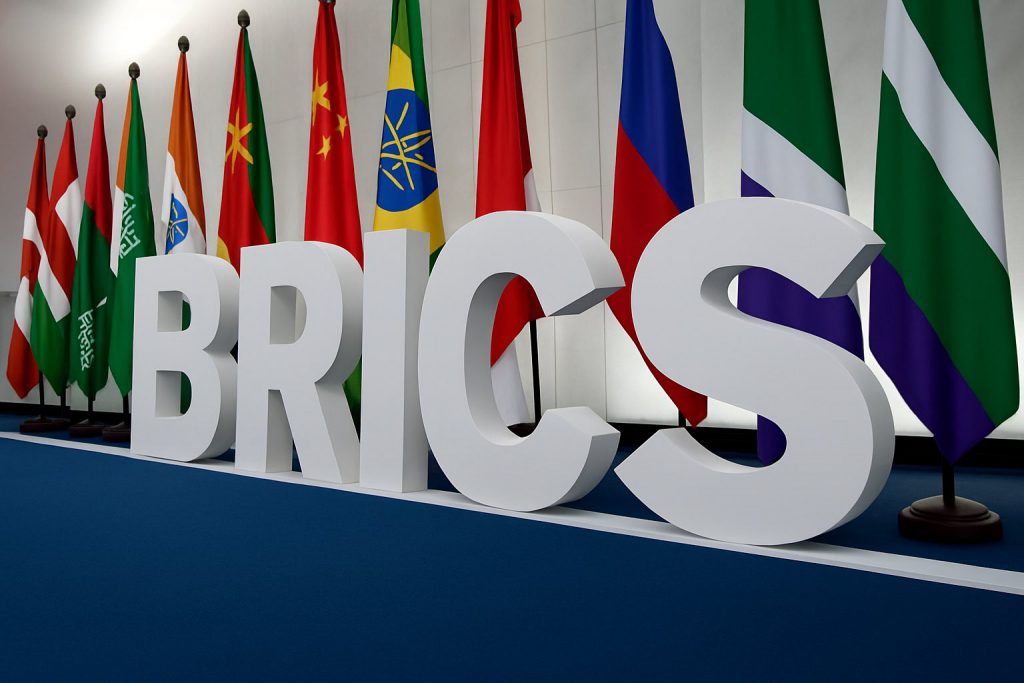The New Development Bank (NDB), which is backed by BRICS countries, is set to issue India’s first rupee-denominated bond by end-March 2026. The bond will raise between $400 million and $500 million through 3-5 year bonds, and this represents a significant step for India’s currency internationalization efforts at the time of writing.
Also Read: Expert: More Countries Opt Out of US Dollar in Trade, BRICS Steps Up
BRICS Bank’s India Rupee Bond Plans Reflect Growing Currency Push


BRICS India Rupee News: Advanced Regulatory Discussions Underway
The BRICS-backed lender has entered advanced stages of discussions with the Reserve Bank of India for its debut rupee issuance right now, according to three sources familiar with the matter. India’s central bank still needs to provide final approvals, and it’s not clear yet if the government has actually granted all approvals. The bank’s Chief Financial Officer, Monale Ratsoma, had this to say:
“NDB is working with the government of India and regulators to explore raising funds in the local markets to provide local currency finance for Indian projects.”
The bank actually planned the bond issuance two years ago, but the government and central bank delayed the launch as they did not provide approvals then. The timing right now aligns with efforts by China and India to push for greater international acceptance of their currencies. Earlier this week, China rolled out measures to support the development of yuan bonds in Hong Kong, and over the past few months, the Indian central bank has announced steps to allow wider investment options for foreign funds held in Indian bank accounts.
BRICS De-dollarization: Building on Local Currency Strategy
Brazil, Russia, India, China, and South Africa established the NDB back in 2015. The bank has raised about a third of its $11 billion bond issues in local currencies like the yuan and South African rand. According to its strategy report for 2022-26, the bank targets to provide 30% of its total financing commitments over the five-year strategy period in national currencies of member countries.
Issuing the bonds in the Indian market will add to the liquidity and also the diversity of the local bond market, one source noted. The onshore market has more depth and will help in better price discovery for investors.
Strong Interest from Emerging Market Investors
Vivek Rajpal, who is an Asia strategist at investment advisory firm JB Drax Honore, stated:
“The issue will draw interest from a segment of investors particularly those focused on emerging markets and interested in the de-dollarisation trend.”
He also mentioned that it can be seen as a step in the direction of rupee internationalisation. Rajpal pointed out that the recent weakness in India’s rupee, which has fallen to a record low amid pressures from U.S. trade and tariff policies, will not be a big hindrance to investors.
Also Read: De-Dollarization Is an Illusion, Says Citigroup
This bond initiative comes at a time when emerging market economies are seeking to reduce their dependence on dollar-denominated debt. Multilateral agencies like the World Bank’s International Finance Corporation have previously issued rupee-denominated bonds in the overseas and local markets, and these offerings drew strong investor interest.
The planned issuance represents an important test for India’s financial markets and positions the rupee alongside other emerging market currencies in international debt markets. With regulatory discussions moving forward right now and the target date set for March 2026, the bond launch will provide local currency financing for Indian projects and support the country’s push for greater currency acceptance globally.





